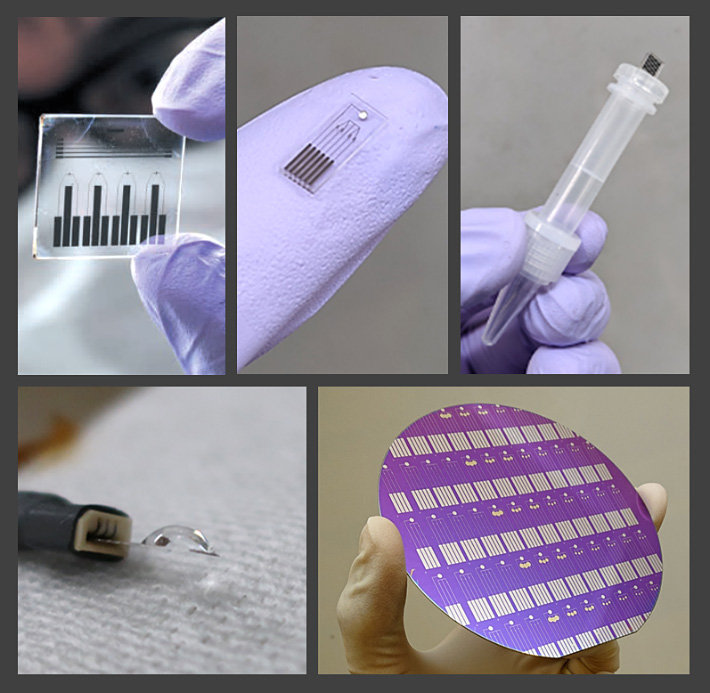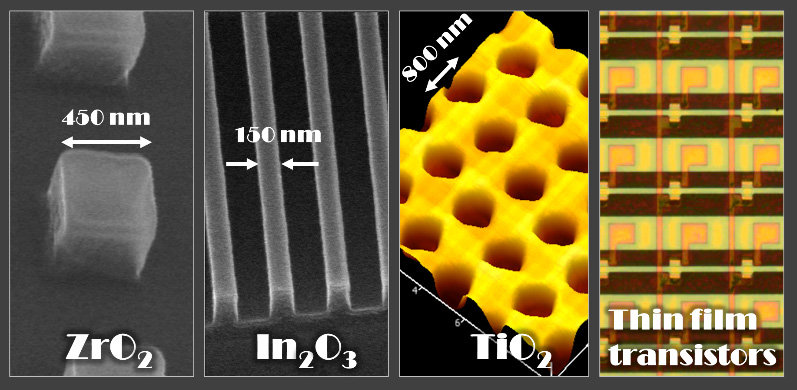
Creation of highly functional materials from liquids for visualization of biology and the environment
Laboratory on Printed Biosensors
Senior Lecturer:HIROSE Daisuke
E-mail:
[Research areas]
Functional oxides, biosensors, liquid processes
[Keywords]
MOD method, thin-film transistor, biomolecule detection, biochip, printed electronics
Skills and background we are looking for in prospective students
Curiosity, the challenge of research, and the will to enjoy unexplained and unknown phenomena.
No special knowledge is required, as we will guide you from the basic level of knowledge. We welcome students from any field.
What you can expect to learn in this laboratory
In our research, we will be conducting experiments in a variety of fields.Through research, you learn research perspectives and ideas that are not bound by your field of study. You obtain the ability to solve problems through logical thinking and task-performance skills. Through presentations at conferences and seminars, you will be able to acquire the ability to make presentations and communicate effectively.
【Job category of graduates】
Semiconductor manufacturing equipment maker, Electronic component companies,Measuring equipment companies
Research outline
 We are creating products based on the metalorganic decomposition (MOD) method. his method is a technique to produce oxides with various electrical properties. Furthermore, we have discovered that oxides and intermediates fabricated by this MOD method have specific characteristics. Our research and development of new sensing devices and patterning methods are based on the combination of these features and semiconductor processes.
We are creating products based on the metalorganic decomposition (MOD) method. his method is a technique to produce oxides with various electrical properties. Furthermore, we have discovered that oxides and intermediates fabricated by this MOD method have specific characteristics. Our research and development of new sensing devices and patterning methods are based on the combination of these features and semiconductor processes.
Highly sensitive oxide sensing devices
We have been researching and developing oxide thin-film transistor-type nucleic acid sensors that enable rapid and sensitive measurement.
Oxide Mold Formation Technology
We have developed a low-energy, low-cost direct printing method for oxides using nanoimprinting. This technique enables easy fabrication of sub-micron scale patterns.

Key publications
- Submicron titania pattern fabrication via thermal nanoimprint printing and Microstructural analysis of printable titania gels, D. Hirose, H. Yamada, T. Jochi, K. Ohara and Y. Takamura, Ceramics International, online,(2024)
- Rapid and Highly Sensitive Detection of Leishmania by Combining Recombinase Polymerase Amplification and Solution-Processed Oxide Thin-Film Transistor Technology, W. Wu, M. Biyani, D. Hirose and Y. Takamura, Biosensors, vol. 13, 8, p. 765,(2023).
- Origin of the thermal plasticity property of zirconium oxide gels for use in direct thermal nanoimprinting, D. Hirose, J. Li, Y. Murakami, S. Kohara and T. Shimoda, Ceramics International, vol.44, p. 17602,(2018).
Equipment
Electronic device fabrication equipment (photolithography, sputtering,nanoimprinting), electrical characteristics evaluation equipment (semiconductor parameter analyzer, impedance analyzer), shape evaluation equipment (SEM, AFM), material properties evaluation equipment (TG-DTA, FT-IR, UV-vis, XRD, XPS, contact angle meter)
Teaching policy
Our laboratory aims to visualize biology and the environment based on MOD technology to produce functional oxides from liquids. We are targeting all kinds of molecules around us and applying them to society and our daily lives.
We are now at a stage of great growth. Let's combine your ideas with our technology to create new visualization sensors!
In our research, we will set a theme in line with your interests. We will support you to clear your subjects one by one toward your goal.